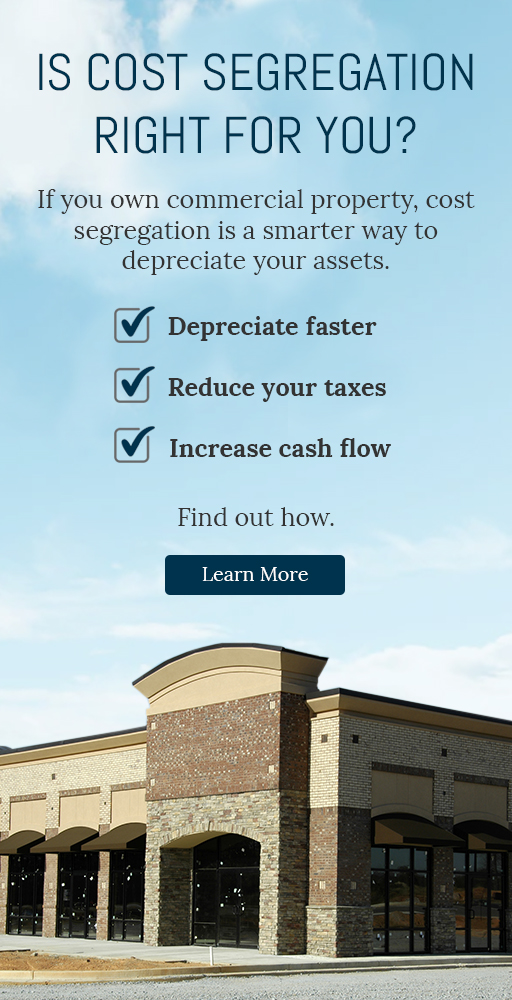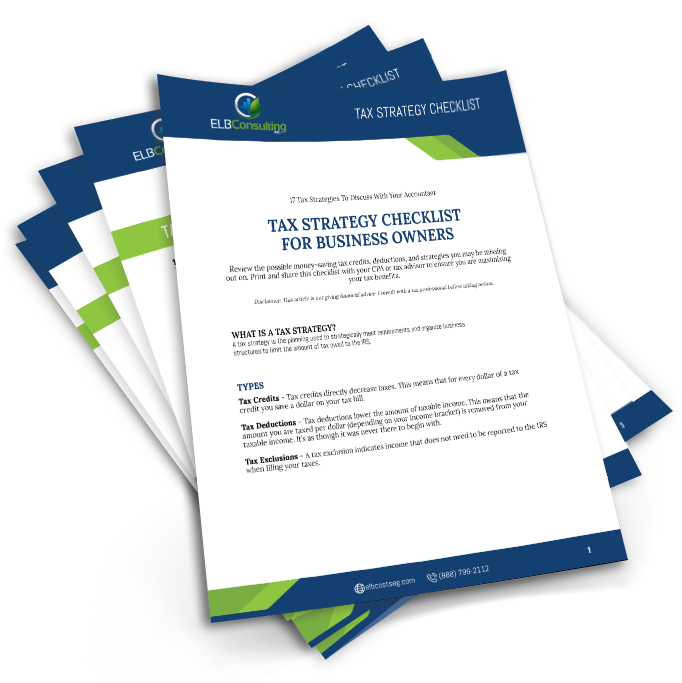Year-end is here. Your tax planning time is short.
Real estate investment provides significant tax incentives.
As we enter this final month of 2023, commercial real estate owners are at a pivotal point for tax planning. When navigating the complex landscape of investment real estate taxation, two considerations come to the forefront: cost segregation and energy tax incentives.
Cost segregation is a powerful tool that allows commercial real estate owners to accelerate the depreciation on certain assets within their properties. By reclassifying these assets, such as specialty lighting, floor coverings, decorative finishes and land improvements, owners will realize significant tax savings.
This becomes relevant as the year-end approaches, as cost segregation can have an immediate impact on taxable income. Cost segregation is substantially enhanced by Bonus Depreciation, which stands at 80% in 2023.
The 179D and 45L Energy Efficiency tax incentives offer another avenue for tax efficiency. If owners and developers invested in energy-efficient upgrades (HVAC, lighting, etc.) and/or the initial builds, they may be eligible for these tax incentives.
These energy efficient tax benefits incentivize sustainable design and upgrades. And provide a tangible benefit to the bottom line. Year-end tax planning should include the assessment of potential energy-related construction and expenditures for 179D and 45L tax incentive qualification.
It’s not just about real estate. Did you innovate?
In tandem with investment real estate tax considerations, firms engaged in research and development (R&D) activities should also pay heed to year-end tax planning. The Research and Development Tax Credit is a valuable incentive designed to encourage product and process innovation. Firms are rewarded with a tax credit for their qualifying R&D expenditures. many activities qualify, it’s not just for the Fortune 500 firms.
As the year concludes, small and mid-sized businesses should consider if they qualify for the R&D Tax Credit. Many states offer an R&D incentive, to couple with the federal R&D Tax Credit.
How are these tax incentives documented for the I.R.S.?
Both commercial real estate owners/invertors, and firms engaged in some form of innovation should evaluate whether they qualify for these tax incentives. Engaging specialty tax experts with a deep understanding of the tax code and industry-specific nuances will help you understand the benefits of cost segregation, energy tax incentives, and/or R&D tax credits.
By strategically incorporating these tax planning measures, owners, investors and businesses can optimize their tax efficiency and financial positions. As well as position themselves for continued success in the ever-evolving economic landscape.




